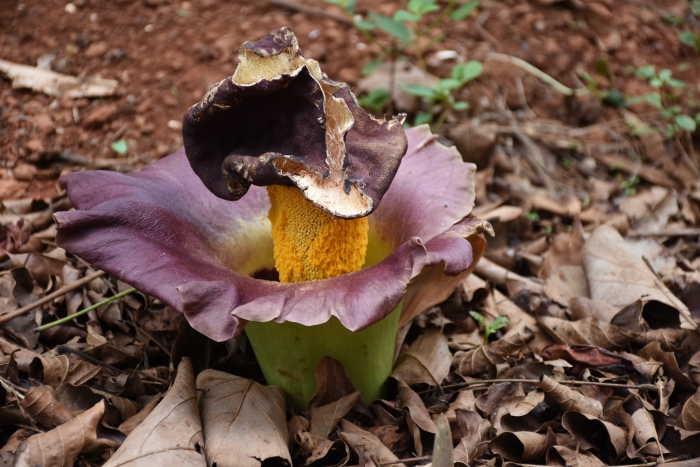Elephant Foot Yam
(Amorphophallus paeoniifolius)
Elephant Foot Yam (Amorphophallus paeoniifolius)
/
/

© deepachandran
CC BY-SA 4.0























Estimated Native Range
Summary
Elephant foot yam is valued for its edible tubers, which are high in carbohydrates and can be used similarly to potatoes. It is also used medicinally in some traditional practices. In cultivation, it requires a warm, humid environment with indirect light and well-draining soil. It is often grown in home gardens and on a larger scale for its tubers. Overwatering should be avoided to prevent tuber rot. While it is not commonly grown for ornamental purposes due to its odor when flowering, the foliage is quite attractive, with large, broad leaves. Potential problems include tuber rot and leaf blight. It is important to be aware that Amorphophallus paeoniifolius can be potentially invasive when grown outside its native range due to its rapid growth and ability to outcompete native vegetation.CC BY-SA 4.0
Plant Description
- Plant Type: Herb, Bulb
- Height: 1-1.5 feet
- Width: 2-3 feet
- Growth Rate: Moderate
- Flower Color: Purple, Red, White
- Flowering Season: Spring, Summer
- Leaf Retention: Deciduous
Growth Requirements
- Sun: Part Shade
- Water: Medium
- Drainage: Medium
Common Uses
Edible*Disclaimer: Easyscape's listed plant edibility is for informational use. Always verify the safety and proper identification of any plant before consumption.
Natural Habitat
native to tropical rainforests and monsoon forests of Southeast Asia, including the islands of Southeast Asia, South Asia, Madagascar, New Guinea, and the Pacific islands
Other Names
Common Names: Elephant Foot Yam, Corpse Flower, Elephant-Yam, Pungapung, Sweet-Yam, Telinga-Potato, Telingo-Potato, White-Spotted Arum
Scientific Names: , Amorphophallus paeoniifolius, Amorphophallus campanulatus, Amorphophallus campanulatus f. darnleyensis, Amorphophallus campanulatus subsp. blumei, Amorphophallus campanulatus subsp. darnleyensis, Amorphophallus campanulatus var. blumei, Amorphophallus chatty, Amorphophallus decurrens, Amorphophallus dixenii
GBIF Accepted Name: